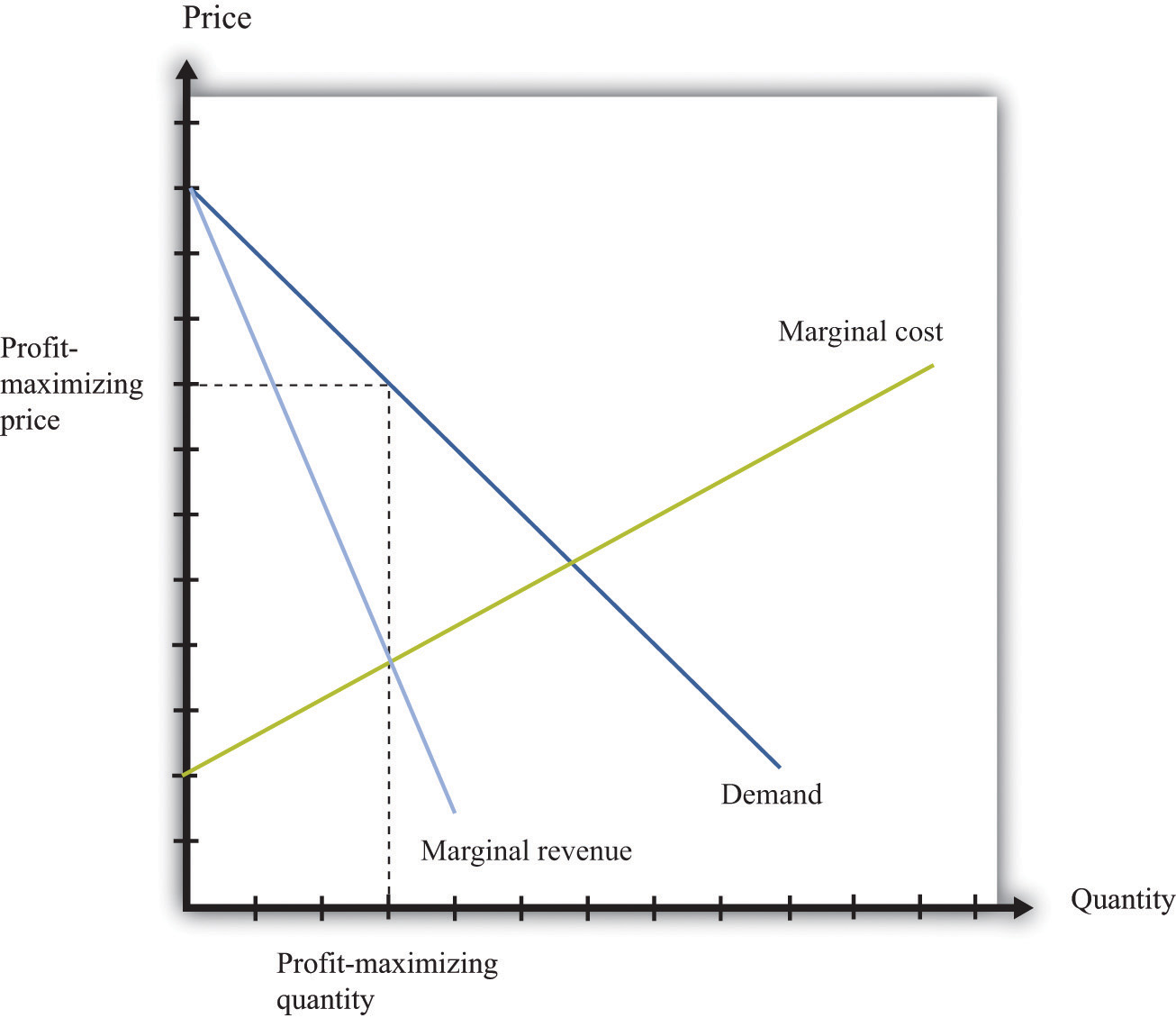This is “Pricing with Market Power”, section 17.15 from the book Theory and Applications of Microeconomics (v. 1.0). For details on it (including licensing), click here.
For more information on the source of this book, or why it is available for free, please see the project's home page. You can browse or download additional books there. To download a .zip file containing this book to use offline, simply click here.
17.15 Pricing with Market Power
The goal of the managers of a firm is to maximize the firm’s profit.
profit = revenues − costs.We can think of a firm as choosing either the price to set or the quantity that it sells. Either way, the firm faces a demand curve and chooses a point on that curve that maximizes its profits. In reality, most firms choose the price of the good that they sell. However, it is often simpler to analyze a firm’s behavior by looking at the quantity that it chooses.
Profits are maximized (Figure 17.12 "Markup Pricing") when the extra revenue from selling one more unit of output (marginal revenue) is equal to the extra cost of producing one more unit (marginal cost). The firm’s decision rule is to select a point on the demand curve such that
marginal revenue = marginal cost.We can rearrange this condition to obtain a firm’s pricing rule:
price = markup × marginal cost.Figure 17.12 "Markup Pricing" illustrates this pricing decision. The markup depends on the price elasticity of demand. When demand is relatively inelastic, firms have a lot of market power and set a high markup. This is not a “plug-and-play” formula because both the markup and marginal cost depend, in general, on the price that a firm chooses. However, it does provide a useful description of a firm’s decision.
Key Insights
- When marginal cost is higher, a firm sets a higher price.
- When demand is more inelastic (so a firm has more market power), the markup is higher, so a firm sets a higher price.
- When demand is perfectly elastic, the markup is 1, and the firm sets its price equal to marginal cost. This is the case of a competitive market.
- Any price you see has two components: the marginal cost and the markup. When a price changes, one or both of these must have changed.
Figure 17.12 Markup Pricing

More Formally
We can derive the markup pricing formula as follows, where π = profit, R = revenues, C = costs, MR = marginal revenue, MC = marginal cost, P = price, Q = output, ε = (ΔQ/Q)/(ΔP/P) = elasticity of demand, and µ = markup.
First we note that
The firm sets marginal revenue equal to marginal cost:
Rearranging, we obtain
P = µ × MC,where the markup is given by




